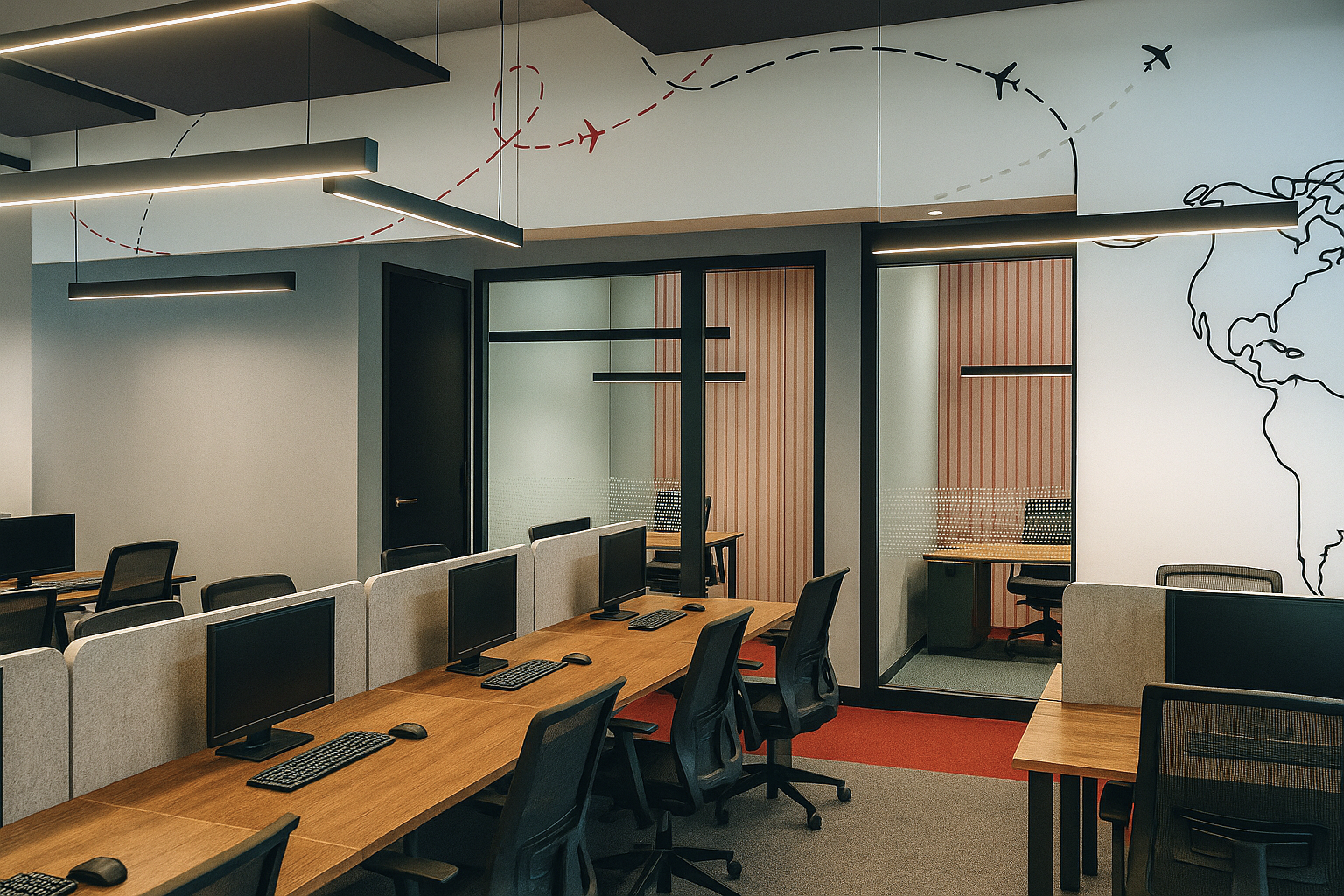The battle for the perfect workplace has raged for decades. On one side stands the open office interior design, providing collaboration and cost savings. On the other sits the private office, offering focus and tranquillity. Research from Harvard Business School reveals a shocking truth that most executives ignore: open offices actually reduce face to face interaction by up to 70%, while simultaneously increasing digital communication. Meanwhile, studies show that employees in closed offices demonstrate 48% better concentration levels and complete tasks 23% faster than their open office counterparts.
This debate affects millions of Canadian workers daily. With 70% of North American companies currently using some version of open office interior design, and employee satisfaction scores continuing to decline, businesses face a critical decision. The answer lies not in choosing sides, but in understanding how different commercial interior design approaches serve different business objectives and employee needs.
How Open and Closed Office Interior Design Spaces Affect Employees
Open office interior design creates environments where employees experience both benefits and challenges simultaneously. Research demonstrates that workers in open layouts report 50% more interruptions throughout their workday, leading to decreased ability to focus on complex tasks. However, these same employees also indicate 25% higher satisfaction with informal communication and team relationship building.
The psychological impact of open commercial interior design extends beyond simple productivity metrics. Employees working in open environments report feeling more connected to company culture and organizational goals. Modern office design that incorporates open concepts typically results in increased awareness of company activities and greater sense of belonging among team members.
Noise represents the primary challenge in open office interior layouts. Studies show that background conversations reduce cognitive performance by up to 15%, particularly for tasks requiring sustained attention. Professional office interior designer teams address these challenges through acoustic planning, strategic furniture placement, and sound masking technologies that minimize distractions while maintaining collaboration benefits.
Privacy concerns in open commercial interior design affect employee behavior and job satisfaction. Workers report reluctance to take personal calls or handle sensitive information in open environments. This privacy limitation can create stress and reduce overall job satisfaction, particularly among employees who handle confidential materials or prefer quiet work environments.
Closed office interior design provides different psychological benefits and challenges for employees. Private offices create a sense of ownership and control that translates into higher job satisfaction scores. Employees with private offices report 30% less workplace stress and demonstrate greater ability to personalize their work environments according to individual preferences.
The isolation potential in closed office interior layouts can negatively affect team cohesion and organizational communication. Employees in private offices may miss important informal communications and feel disconnected from company culture. Professional office interior designer teams address these challenges by creating strategic common areas and meeting spaces that encourage interaction.
Advantages of Open Commercial Interior Design for Productivity and Collaboration
Open commercial interior design delivers measurable collaboration benefits through spontaneous interaction opportunities. Research indicates that teams working in open environments generate 15% more creative solutions compared to those in closed layouts. The visual connectivity inherent in modern office design allows employees to quickly identify available colleagues and initiate impromptu discussions that lead to innovation.
Cost efficiency represents a significant advantage of open office interior design approaches. Businesses typically reduce real estate costs by 30% through open layouts that accommodate more employees per square foot. This efficiency allows organizations to invest savings into enhanced office furniture design, better technology infrastructure, or improved employee amenities.
Flexibility benefits emerge when open commercial interior design incorporates modular systems and adaptable layouts. Companies can reconfigure open office interior layouts quickly to accommodate team changes, project requirements, or business growth. This adaptability proves particularly valuable for dynamic organizations that experience frequent structural changes.
Management visibility improves in open modern office design environments where supervisors can observe team dynamics and provide support more effectively. Managers report 25% better awareness of employee workload and stress levels in open layouts. This visibility enables proactive intervention and support that improves overall team performance.
Communication speed increases measurably in open office interior design environments. Information travels faster through open layouts, reducing the time required for decision making and project coordination. Teams working in open spaces complete collaborative projects 20% faster than those in closed environments.
Natural light distribution improves in open commercial interior design layouts where fewer barriers exist between workstations and windows. Enhanced natural lighting reduces eye strain, improves mood, and creates more attractive work environments that support employee wellbeing and productivity.
Advantages of Closed Office Interior Design for Focus and Privacy
Closed office interior design provides superior environments for deep work and complex problem solving. Employees with private offices demonstrate 35% better performance on tasks requiring sustained concentration. The elimination of visual and auditory distractions allows workers to enter flow states more easily and maintain focus for extended periods.
Confidentiality advantages make closed commercial interior design essential for certain business functions. Legal, financial, and human resources activities require private spaces where sensitive conversations can occur without compromising information security. Professional office interior designer teams understand these requirements and create appropriate private areas within overall layout strategies.
Noise control in closed office interior layouts dramatically improves work quality for noise sensitive tasks. Phone calls, video conferences, and meetings can occur without disturbing neighboring colleagues. This acoustic separation proves particularly valuable in environments where multiple teams handle different types of work requiring varying noise levels.
Status recognition through private office assignments can improve employee motivation and retention. Companies report 20% higher retention rates among employees who progress from open areas to private offices. This progression provides tangible career advancement recognition that motivates performance improvement and organizational loyalty.
Personalization opportunities increase significantly in closed office interior design environments. Employees can customize private spaces to reflect personal preferences and work styles. This personalization contributes to job satisfaction and creates more comfortable work environments that support individual productivity patterns.
Health benefits emerge from reduced exposure to airborne illnesses and allergens in closed layouts. Private offices limit disease transmission and provide better indoor air quality control. Employees in closed office interior layouts report 15% fewer sick days compared to those in open environments.
Practical Tips for Different Office Types and Space Applications
- Technology companies benefit most from hybrid office furniture design that combines open collaboration areas with private focus spaces. Modern office design for tech environments should include 60% open collaborative space, 30% private offices, and 10% specialized areas like server rooms or testing labs. This balance supports both innovation and individual productivity requirements.
- Creative agencies require flexible commercial interior design that adapts to project based workflows. Office interior layouts should incorporate 50% open creative spaces, 25% private offices for account management, and 25% presentation and client meeting areas. Professional office interior designer teams create environments that inspire creativity while maintaining client service capabilities.
- Financial services need closed office interior design that prioritizes privacy and security. Office interior layouts should feature 70% private offices, 20% secure meeting rooms, and 10% open areas for support functions. Compliance requirements and confidentiality needs drive these space allocation decisions in financial environments.
- Law firms benefit from traditional closed commercial interior design with strategic collaboration areas. Modern office design for legal practices should include 75% private offices, 15% conference rooms, and 10% shared research and administrative areas. This allocation supports both confidential client work and team collaboration requirements.
- Healthcare organizations require specialized office furniture design that accommodates privacy regulations and patient confidentiality. Office interior layouts should feature 80% private offices and examination rooms, 15% secure record storage, and 5% staff collaboration areas. Professional design teams understand healthcare specific requirements and regulatory compliance needs.
Frequently Asked Questions (FAQ):
How do professional office interior designer teams determine the optimal balance between open and closed spaces for different business types?
Professional office interior designer teams analyze specific business functions, employee roles, and organizational culture to determine optimal space allocation ratios. They conduct workflow assessments, employee surveys, and task analysis to understand collaboration versus concentration requirements. For technology companies, designers typically recommend 60% open collaboration areas and 30% private spaces, while financial services require 70% closed offices for confidentiality. Commercial interior design professionals also consider industry regulations, client interaction patterns, and growth projections when creating balanced modern office design solutions that support both current needs and future expansion.
What specific office furniture design strategies help minimize the disadvantages of open office interior layouts while maintaining collaboration benefits?
Effective office furniture design strategies for open layouts include acoustic panels, mobile privacy screens, and height adjustable workstations that create flexible barriers when needed. Professional teams specify modular systems that allow employees to create temporary private zones for focused work while maintaining sight lines for collaboration. Modern office design incorporates noise masking systems, varied ceiling heights, and strategic placement of collaborative zones away from concentration areas. Commercial interior design solutions also include phone booths, quiet zones, and touchdown spaces that provide privacy options without eliminating the openness that enables spontaneous interaction and team connectivity.
How do energy costs and environmental factors differ between open and closed office interior design approaches?
Open office interior design typically reduces energy costs by 20% to 30% through more efficient heating, cooling, and lighting distribution across larger spaces. Fewer walls and partitions allow better natural light penetration and air circulation, reducing artificial lighting and HVAC requirements. However, open layouts may require more sophisticated acoustic solutions and air quality management systems. Closed commercial interior design provides better individual climate control but requires more electrical and HVAC infrastructure. Professional office interior designer teams optimize energy efficiency in both layouts through strategic lighting placement, smart building systems, and office furniture design that supports rather than obstructs environmental systems performance.
Key Takeaways:
- Open office interior design reduces face to face interaction by 70% while increasing digital communication, contradicting traditional collaboration assumptions
- Employees in closed office interior layouts demonstrate 48% better concentration and complete tasks 23% faster than open office counterparts
- Open commercial interior design reduces real estate costs by 30% and enables 15% more creative solutions through spontaneous collaboration opportunities
- Closed office interior design provides 35% better performance on complex tasks and reduces workplace stress by 30% through enhanced privacy
- Modern office design requires hybrid approaches with 60% open collaboration, 30% private focus areas, and 10% specialized spaces for optimal productivity
- Professional office interior designer expertise ensures appropriate balance between collaboration and concentration needs for specific industry requirements
- Office furniture design in open layouts must incorporate acoustic solutions and strategic placement to minimize the 50% increase in workplace interruptions
- Closed commercial interior design supports 20% higher employee retention rates through status recognition and personalization opportunities
- Technology integration becomes critical in modern office design regardless of open or closed layout choices for supporting hybrid work requirements
- Industry specific space allocation ratios guide successful office interior layouts from 50% open creative spaces to 80% private healthcare offices
Smart businesses recognize that the open versus closed office interior design debate misses the fundamental point: successful workplaces require both collaboration and concentration capabilities. Professional commercial interior design teams create hybrid environments that maximize the benefits of each approach while minimizing their respective limitations. When modern office design incorporates strategic combinations of open and closed areas, businesses achieve superior results through enhanced employee satisfaction, improved productivity, and operational flexibility that adapts to evolving work requirements. The future belongs to organizations that understand how thoughtful office furniture design and strategic space planning create competitive advantages through optimized work environments.

